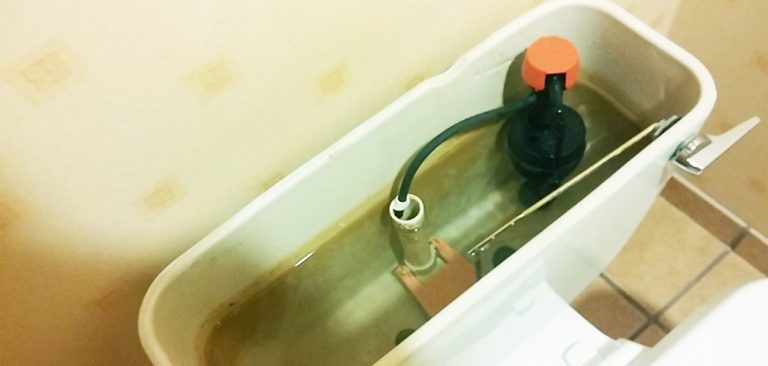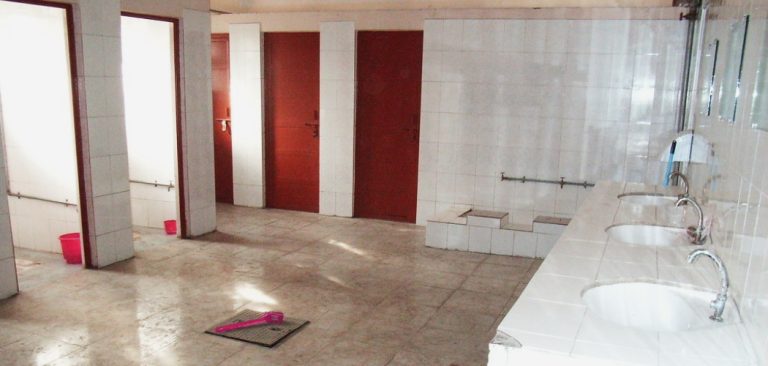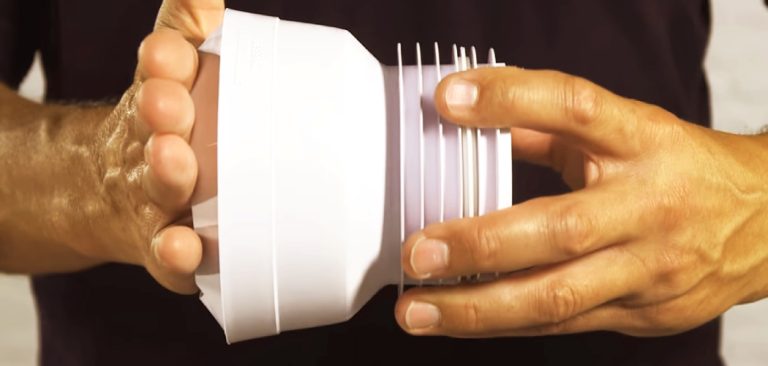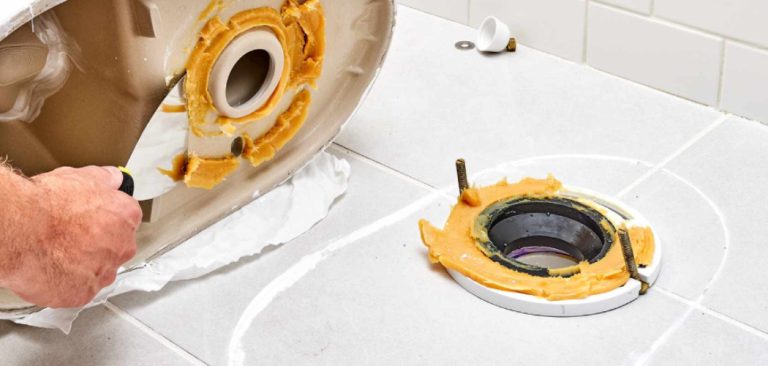How to Remove Rusted Toilet Flange Bolts
Have you ever experience to remove a rusty toilet flange bolt only to find that it’s rusted and stuck so tightly that you can’t get your wrench onto it? Or, maybe you’ve tried using a breaker bar, and it just bends the bolt? If so, you’re not alone.
Many people end up giving up on this job, thinking that it’s just too difficult. The good news is that there is an easy way to remove these bolts without any damage. Here, we will show you how to do it in just a few steps!
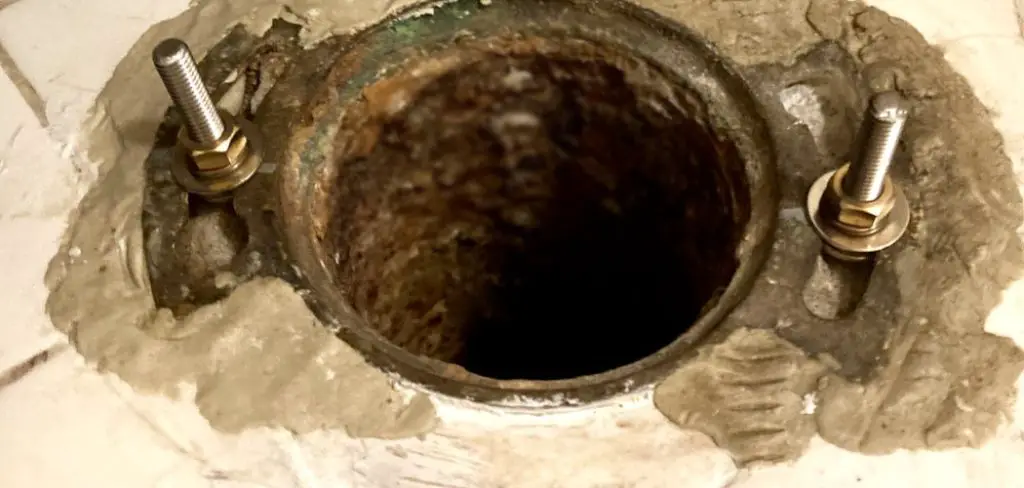
Why Do Toilet Anchor Bolts Rust?
Rust is a natural reaction to the metal in contact with saltwater, which is why toilet Flange bolts rust. Water rushes down the pipe and into the tank when a toilet is flushed. Due to the presence of water, there can be moisture which causes the flange in the bowl to rust.
Flange bolts are usually made of zinc or iron and are easy to rust on these surfaces. If you see rust on your toilet flange bolts, it is important to take action before it causes more damage.
The condensation of the bolts in your tank and exposure to water has created rust over the years. This is the result of rust oxidation, which results from iron, steel, or other metals coming in contact with water and oxygen over time.
Methods to Remove Rusted Toilet Flange Bolts
If you are experiencing trouble removing rusted toilet flange bolts, a few methods may work for you. We gonna start discussing methods in detail below: Let’s see how to proceed with removing rusted flange bolts.
1. Use a Plier or Wrench
Here is an instant solution for removing rusted toilet flange bolts. This application may use for the initial stage if rust isn’t bad too much. First, you can try using a simple plier or wrench as a basic and first method.
2. Use a WD-40 and Wrench or Pliers
This is a more involved approach but can be successful if there is a lot of rust and the bolts are relatively accessible. The WD-40 will loosen the rust of the flange, allowing you to grab the bolt with a wrench or pliers. This process will definitely work if the condition of the bolts is not too bad.
3. Use a Dremel
Dremel can be an excellent solution for the bold removal of rusty flanges. With this, you can try two ways. First, you can cut the rust around the bolt with Dremel, then try to open it by turning the bolt with a wrench or pliers. Second, if the first technique does not work, cut the bolt with Dremel; Then, you can remove it from the screw easily.
You can also cut the steel part of the flange next to the bolts. This process will separate the bolt of the flags, and you will get a little more space.
4. Use a Mini-Hacksaw
Use this method to cut the bolt of the flush with the flange. This task can be a little difficult or time-consuming. Mini-hacksaw blades must be new and sharp to make the job easier.
The mini-hacksaw blade should start cutting from the base under the bolt. It is not possible to reach the bolt with the mini-hacksaw blade flange in some cases. Because the flange is a few centimeters below the floor, the process may not work as expected.
5. Use an Angle Grinder
I think it’s a much easier and faster method. You can easily cut from the bottom of the bolt by turning on the Angle Grinder. You can then pull the fan out with a screwdriver or pliers.
N.B. This is the most drastic option and should only be used if all other measures have failed. Angle grinders are dangerous tools and require careful use, so read up on how to safely operate one before attempting this method.
6. Use a Socket Wrench
If you have a socket wrench, you can try to open it. If the socket wrench can fit properly with the bolt, the socket wrench will hold the flange bolt tightly, and the flange bolt will open as soon as the wrench is rotated.
Many people make that mistake- Before opening with a wrench, do not oil the middle of the bolt but you can apply rust remover.. This will cause the bolt to slip around, and the socket wrench will not be able to hold the bolt tightly.
7. Flat Sanding Stick With Vise-grip or Wrench or Pliers
You can rub it around the bolt with a flat sanding stick to grip it. This will separate the rust from the bolts, and the core of the vault will come out, which you can open with either Vise-Grip, Wrench, or Pliers.
8. Drill Out Bolts
If you have a drill with bits in multiple sizes, it may be possible to drill out rusted bolts without damaging results. However, make sure your tools are correctly applied.
Once you have removed the rusted flange bolt with one of these methods, all you have to do is lift the toilet up and close its flange. You can then replace or repair the plumbing fixtures as needed.
Tips for Removing Rust Commonly as a Homemade Solution
Although many people remove and replace rusty fasteners in some cases. Rust removal restoration of bolts and screws through cleaning and re-installation can be an important and cost-effective way to keep a device working. There are several ways to remove rust, each with its own effectiveness. In addition, some more common strategies can be used:
Sand Paper: After removing rusty fasteners, rubbing it with fine-grade sandpaper or steel wool is easy to scrape off the rust. This is a relatively simple and inexpensive procedure, but it can be time-consuming.
1. Hydrogen Peroxide
It can be applied to fasteners and stands while dissolving some rust on the surface. After removing the fastener, it will usually be rubbed with a stiff brush to clean the thread and shank. Using Hydrogen peroxide is also a relatively inexpensive method, but it can leave a residue of rust behind.
2. Repaint
Coating can be used to limit rust spread. After the rust is removed from a specific area of the metal material, painting on that surface can help protect the metal from environmental influences, such as moisture, which causes rust.
3. Rust Cleaner
There are numerous rust cleaner brands. Most of them contain a dissolving agent, such as oxalic acid, which chemically reacts with iron oxide to remove it from the base material.
These rust cleaners are especially suitable for small metal parts, such as fasteners, which can be dipped, soaked, or sprayed in a solution to remove rust. The manufacturer’s safety recommendations should be taken seriously, as misuse of these cleaners can be harmful.
Methods to Avoid When Removing Rusted Toilet Flange Bolts
If you are removing bolts that are rusted and difficult to access, you can do a few things to help make the job easier.
Beware of Using Hammer!
It would be foolish to strike hard with a hammer. This can damage your flange. Moreover, the floor tiles are more likely to break. Hammer is of no use to you here. So do not use Hammer for Removing Rusted Toilet Flange Bolts.
Some Oil That Will Make Bolt Slip
Please do not use any oil on the bolt; it can do more harm than good because some oil bolts will make it slippery or its edges even, Which will prevent you from grabbing other tools. I suggest you for using rust remover instead of oil.
Are There Any Risks Involved in Attempting to Remove Them?
While there are no guarantees, using a safe method should minimize potential risks. If you choose to use an oil-filled wrench, wear an eye protector and gloves.
If you need to use a hacksaw, avoid cutting through your plumbing or injuring yourself. Finally, if you decide to use an axle splicer, make sure that you understand how it works and how to safely operate it before attempting the job.
FAQs
Should You Replace These With New Ones?
Be sure to use new Bolts for Toilet Flange during re-setup. Because of the rust on the edges of the bolts, ordinary tools become harder to open later.
Is There a Special Tool That You Should Buy to Remove Rusted Toilet Flange Bolts?
Many tools show the process of opening the bolt in the above article. Use the tools you have to open the rusted bolts first. If you cannot use the available tools, you may want to consider purchasing other tools later.
How Do You Remove Rusted Toilet Flange Bolts Without Damaging the Floor?
The procedures mentioned in this article are not likely to damage your floor. But you have to be careful; Tools should not create pressure or come into contact with the floor during work.
What Are the Best Tools to Use for Removing Rusted Toilet Flange Bolts?
The answer cannot be said with certainty because the success of your equipment will depend on the rust condition of the bolts in the toilet flange. Cause I have written this article in detail, mentioning what to use in any case. So read the whole article.
What Is the Best Way to Get Rid of All of the Rust From These Bolts So They Can Be Reused Again?
You must think again about the bolt reuse of your toilet flange because excess rust destroys the shape of the volt. Although it can be reused, you will have difficulty opening it later.
However, most of the time, the condition of the bolts is quite good. In that case, you can use Rust Remover to remove some rust and clean it. Then it will be suitable for reuse.
What Could Happen if You Don’t Remove Flange Bolt?
We all know the natural action of rust that gradually weakens and brittle the metal. If you do not remove the bolts, rust will spread between the screw and the flange & distort it.
What Are the Bolts That Secure the Toilet to the Floor?
The bolts that secure the toilet to the floor are typically located near the toilet’s base. Toilet anchor bolts hold your toilet to the floor and attach it to the flange.
Conclusion
Thanks for reading our blog! In this article, we will discuss the best way to remove rusted toilet flange bolts onward and what impacts can be seen if rust remains for a long time. If you have an idea or experience that you would like to share, please do not hesitate to leave a comment below. We would love to hear from you!
You may read also –

